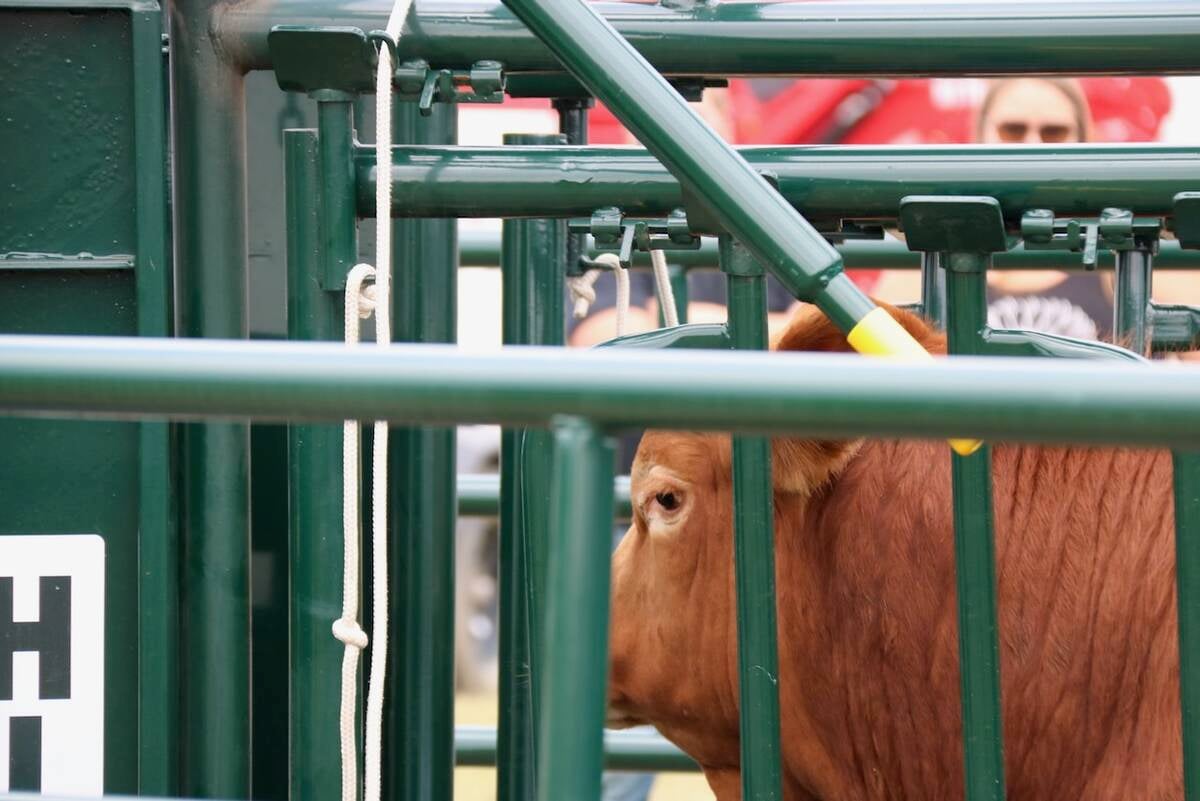An artificial intelligence platform seeks to put some of the skills of producers into computers that can monitor livestock around the clock, easing the need for human labour.
“A rancher has years of experience and knowledge, but they can’t be everywhere at once,” said Geoffrey Shmigelsky, chief technology officer at OneCup AI.
“A computer never sleeps … it never gets bored, so we can run it all the time, and look and see all the time. And if you have more than one camera, you have many eyes on the ground, so you have a lot of information coming in to monitor your herd all the time.”
Read Also

Good handling equipment a must on cattle operations
It’s important for the safety of producers and everyone else dealing with their stock that handling equipment is functional and safe.
The platform is called BETSY, which is an acronym for Bovine Expert Tracking and Surveillance. It’s an artificial intelligence system that uses facial recognition technology to monitor livestock.
It aims to free up time and resources for producers, easing the challenge of finding skilled human labour to look after animals, said a company statement. BETSY can not only learn on its own to identify and track individual animals ranging from cattle, sheep, bison and elk to horses and even fish, it can also flag problems such as illnesses or abnormal behaviour, said Shmigelsky.
He is perhaps best known in Calgary as the founder of CADvision, an internet service provider in the 1990s that he said was the first in the world to launch high-speed asymmetric digital subscriber lines (ADSL) at scale. The company was later sold to Telus.
The idea for OneCup AI was sparked when he and his wife, Mokah, who is now the firm’s chief executive officer, were visiting relatives in Alberta who are livestock producers.
“We were sitting around a campfire making marshmallows … and they were commenting how hard it was to track animals for shipping. And I said, ‘well, that seems crazy. We’ll have a look at that.’ ”
The technology behind BETSY only became sufficiently affordable last summer, said Shmigelsky, who was a speaker at the recent AgSmart expo at Olds College in Alberta. Due to declining hardware costs, OneCup AI was able to start using edge computing, which involves processing data at its source rather than via cloud computing on the internet.
It allows producers to place a small black box containing BETSY near locations such as watering holes or feedlots, monitoring their livestock through 3D cameras connected via wi-fi.
“That made a big difference because before, you’d have to do it either with a much bigger computer or deployed in the cloud. Either one was expensive,” said Shmigelsky in an interview.
The black boxes are about five by eight by 10 centimetres and contain a computer capable of carrying out 21 trillion calculations per second. It can run 16 cameras simultaneously and process it all remotely at a low cost.
Each camera can be focused by BETSY, generating up to 200 million points of data per month. Such capabilities allow the platform to learn details about the characteristics of both individual animals and herds, he said.
“This is the power of this technology,” Shmigelsky told the audience at AgSmart as he pointed to a video clip of a cow. “We didn’t tell BETSY how to ID the animal. She looked at it and figured it out all by herself. She figured out what made the cow unique.”
BETSY’s artificial intelligence differs from conventional computer techniques, he said during the interview.
“We teach her, we don’t program her. We teach her to see the things we want her to see, and once we teach her once, it can be given to everybody.”
The resulting platform does everything from tracking animal growth and evaluating nutrition for more efficient feed rations to detecting potential health problems such as lameness or disease outbreaks.
“We’re not a diagnostic tool, just to be clear, because we don’t want to go through that regulatory process, but we can see all the problems,” said Shmigelsky.
“Who gets up and walks in the middle of the night way more than anybody else? We can tell you who that is. Who is not getting up to eat first, or eat last? Who is not drinking? Who is not eating?”
Producers are notified via text and email on their smartphones, allowing them to decide if a veterinarian should be consulted for diagnosis and treatment, said Shmigelsky.
BETSY can be particularly helpful to ranchers during calving, he added.
“You’ve got to be up and about all the time to check on how your calving is going. BETSY can watch calving. She can see when the animals show contractions; when it’s delivering an animal. We can watch the birth process.”
BETSY uploads its data into the cloud, creating an historical dataset that can be reviewed. OneCup AI is also developing a mobile app for the platform.
The rollout of the Starlink satellite system by American entrepreneur Elon Musk’s SpaceX company will ease the transfer of data by dramatically improving internet access in rural and remote areas, said Shmigelsky.
“Soon, you’ll be able to watch Netflix in the middle of the Indian Ocean… there’ll be broadband to every inch of the planet, and you’ll see that probably by Christmas.”
About 20 beta sites across Canada are currently using BETSY in provinces from British Columbia to Ontario. However, the potential market for the platform is enormous, he said.
“We estimate there are five billion animals in the world that are livestock that are four legged … we can see this being deployed from here to Iceland to Australia.”
















